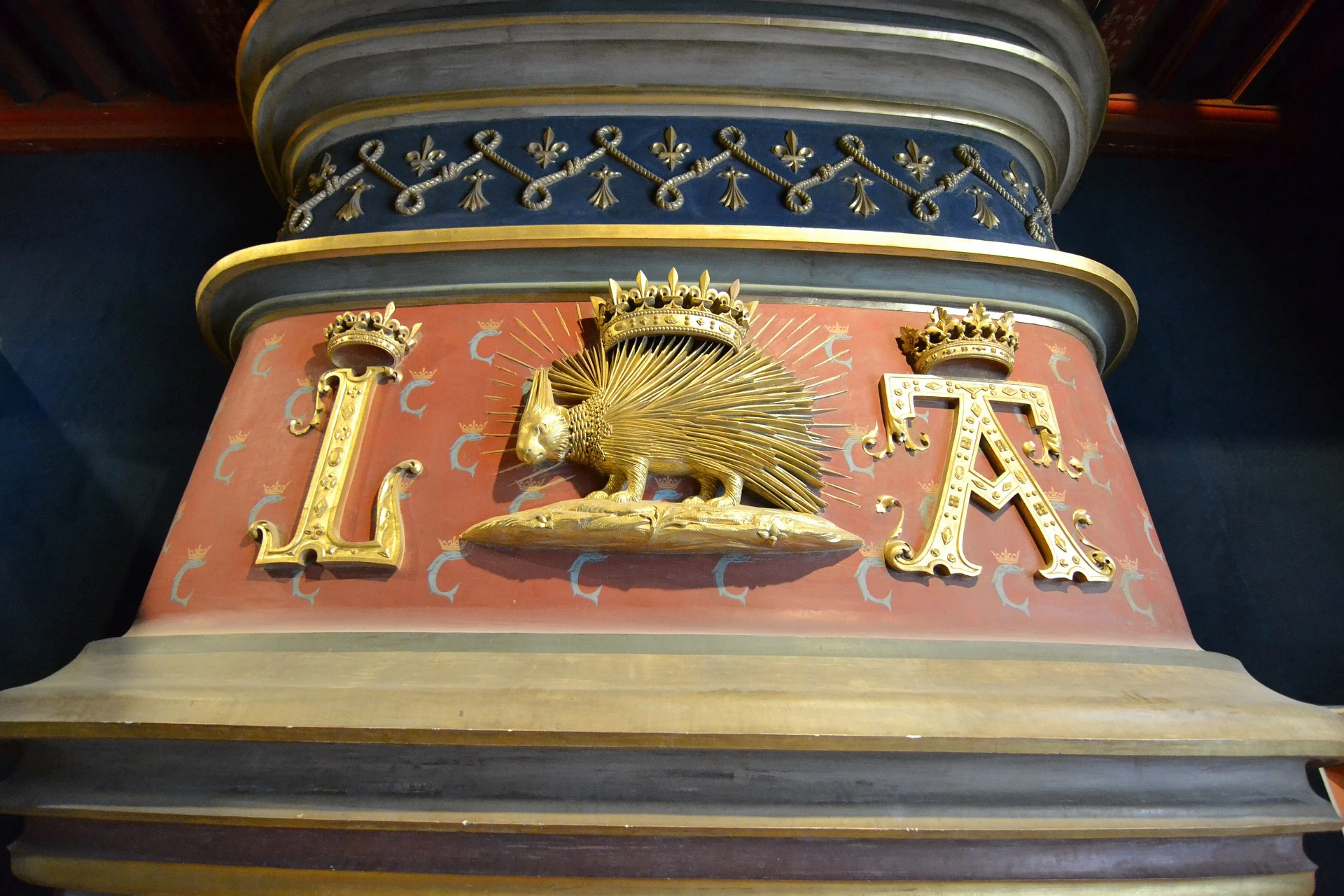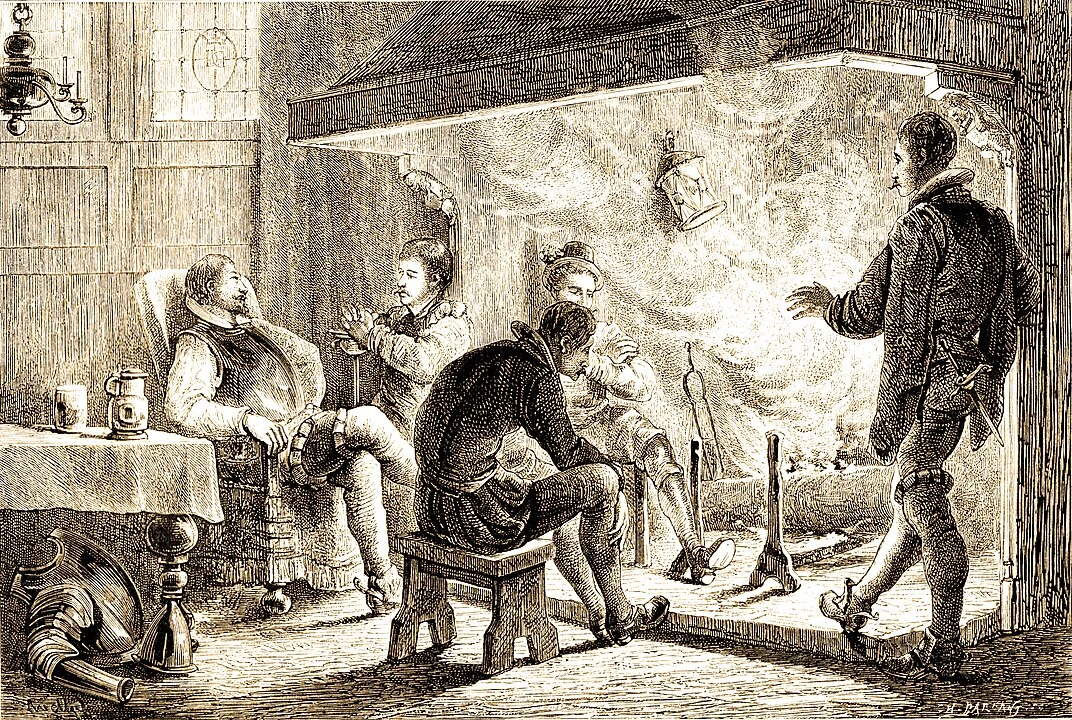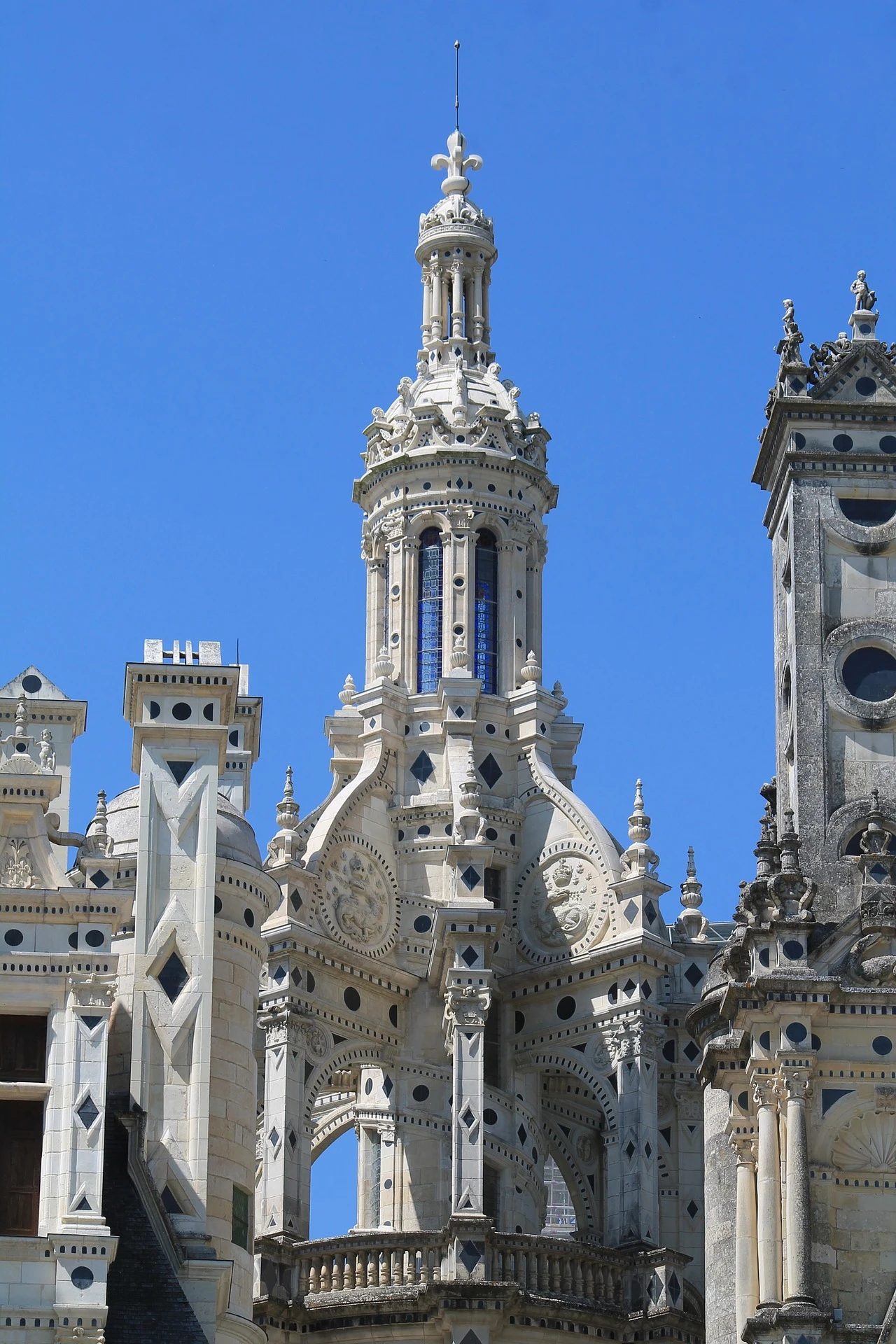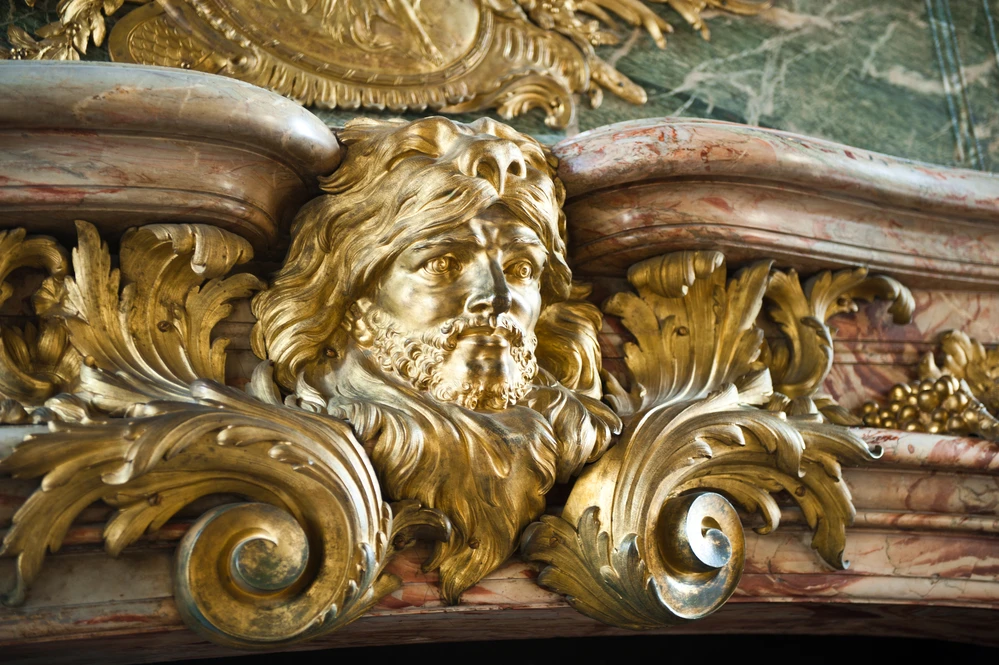The chimney is a very old invention
If we consider that a chimney is the place through which the smoke from a fire escapes, then it's almost as old as the invention of fire. But if we consider that we need a flue to speak of a chimney, we can consider that the first ovens led to the creation of the chimney flue. In any case, the French word " cheminée" comes from the Greek "Kaminos", which gave rise to "Camina" in Latin, meaning "the way". By this we mean: the path of the smoke.
The Middle Ages saw the construction of the first chimneys.
A medieval fireplace. photo chosen by monsieurdefrance.com: Shaiith79 via dépositphotos.
It's thought that chimneys, as we know them today, were first built for heating purposes in the 11th century, around the year 1000. Mostly in castles, but also in abbeys. Abbeys often had just one fireplace for everyone, in a room called the "chauffoir". Here, monks would warm their fingers before returning to illuminating manuscripts. The ink was thawed in winter. Some of the chimneys from the Middle Ages are absolutely enormous, such asthose at Mont-Saint-Michel, which are so impressive they could cook an entire ox to feed the many pilgrims who came to pray to Saint Michel.
In the Middle Ages and Renaissance, people often stood in the fireplace to be close to the heat, which also explains the size of some of the fireplaces in castles. Illustration chosen by monsieurdefrance.com: By H. Pareag - Scan book XIXe s, Public Domain, https://commons.wikimedia.org/w/index.php?curid=15651535
In the Middle Ages, this was often the only stone part of the house, the rest being made of wood (which led to huge fires in some towns). Everything is concentrated around the chimney, just one per house, which is constantly fed, except at night because of the risk of fire, hence the "curfew", when, in towns, a bell rings to remind inhabitants to cover the fire, in other words to put out the fire in the chimney. There' s always a pot on the stove, which you raise and lower on a rack to get more or less heat to cook the food. It was also in the Middle Ages that people began to speak of "fires" or "flues" to count the number of inhabitants in a place. We counted by fire, in other words by family, and taxes were distributed by fire, no matter how many people were around. These imprecise fire counts are a real headache for today's historians.
The fireplace is royal
Some of the 262 fireplaces at Château de Chambord. Photo chosen by Monsieurdefrance.com: Image by cristouclap from Pixabay
The Renaissance offered the first truly decorative fireplaces. They were to be found in grand residences. The King of France had to have fireplaces, and impose them. They are often sculpted and decorated with the lilies of France or with the king's emblems. In the châteaux of the Loire Valley, for example, mantels are decorated with the F of François 1er or with salamanders, his emblem. Speaking of François 1er, he's the king of fireplaces! In the Château de Chambord alone, which we owe to this king, there are 262 fireplaces. No two are alike.
 The Porcupine, symbol of King Louis XII (1462-1515), appears on one of the mantelpieces of the Château de Blois. Photo chosen by monsieurdefrance.com: Image by Julia Casado from Pixabay
The Porcupine, symbol of King Louis XII (1462-1515), appears on one of the mantelpieces of the Château de Blois. Photo chosen by monsieurdefrance.com: Image by Julia Casado from Pixabay
One might imagine Louis XIV, king of kings, as an ace in the fireplace department, but not at all! The king wasn't at all chilly. Even worse! He literally froze those around him, so insensitive was he to the cold. In the middle of winter, he can be seen opening the windows to get some fresh air, while his wife, the Marquise de Maintenon, is literally freezing. There are very few fireplaces at Versailles. Only 1,170 under Louis XVI, which is very few for a château housing several thousand people. Only 1 fireplace in the king's bedroom. Louis XV, his great-grandson, had one added because he was so cold, especially for the public rising ceremony, during which he wore his shirt . However, even with so few fireplaces, the budget was absolutely enormous. Tens of thousands of bundles of wood were needed to feed the fires. Today, Versailles has 352 fireplaces, 1 for every 2 rooms, and therefore fewer mirrors (there are 700). Add to this the draughts that flow through the château, and it's clear that life as a courtier wasn't always easy, and it's easy to understand why, in the winter of 1709, the harshest winter France has ever known, the wine froze in Louis XIV's glass...
Detail of a fireplace in the Salon d'Hercule at Versailles. Photo chosen by monsieurdefrance.Com: worldphotos via depositphotos.com
The fireplace conquers France
The 18th and especially the 19th centuries saw the advent of small fireplaces in all rooms, including bedrooms, which was quite new at the time. Open fireplaces, which did not heat well, were gradually replaced by stoves in many regions, particularly in the East. Alsace, Lorraine, Jura... Fireplaces are replaced by earthenware or cast-iron stoves, fuelled by coal. In fact, it was coal that began to sound the death knell for fireplaces. Coal is complicated to burn in a chimney, producing a black smoke that the chimney has difficulty evacuating.
Fireplaces in France today
Heating has changed over the years. Gas, electricity, heat pumps... There are so many ways to heat your home that the fireplace is much less useful today. Nevertheless, they remain important in France, where there are 1,700,000 open fireplaces and almost 6,000,000 closed fireplaces. This means that more than 51,000,000 steres of wood are consumed in France.
And where does Santa fit in?
Père Noel in 1848 emerging from a chimney. illustration chosen by monsieur de France: via wikicommons: of Howitt's Journal of Literature and Popular Progress for 1848
Fortunately, Père-Noêl lives with the times, and the disappearance of the chimneys through which it passed in the 19th century when it was first discovered has not prevented it from making its distribution. Far from it!










